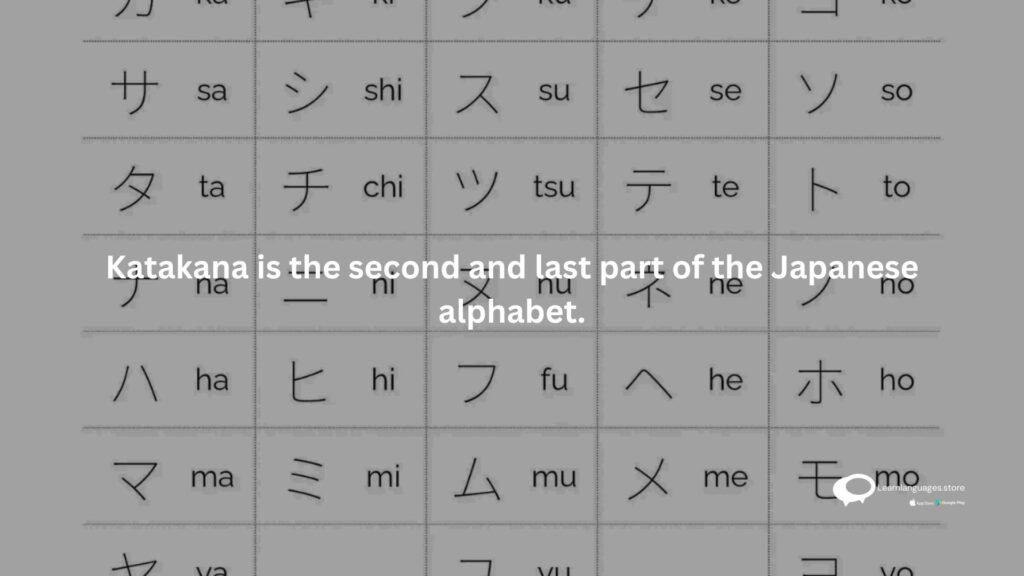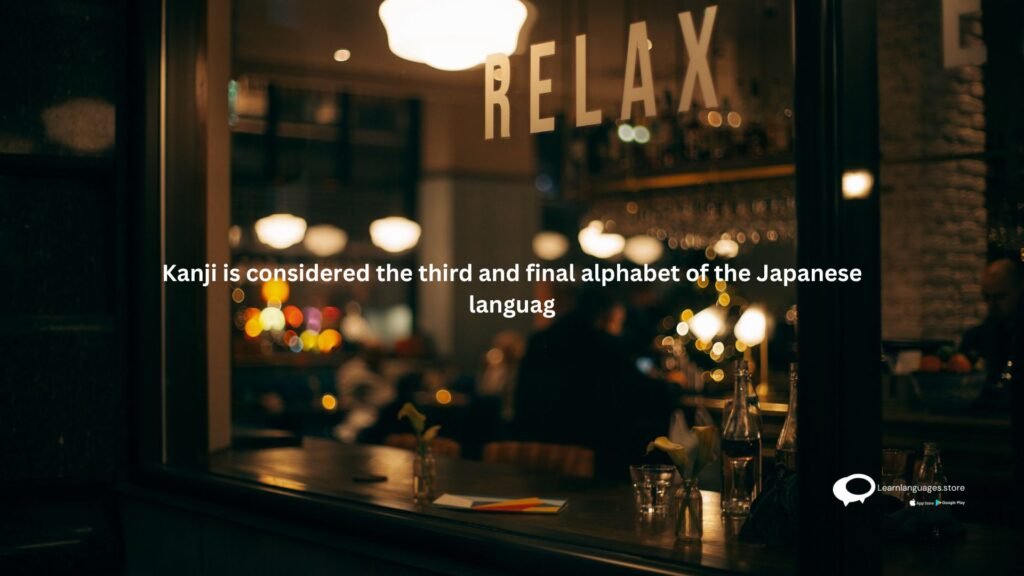Is it hard to learn the Japanese alphabet?
Is it hard to learn the Japanese alphabet?
Is it hard to learn the Japanese alphabet? If you reside in Mumbai or Navi Mumbai and are having difficulty learning the Japanese alphabet, you should read this article in order to get some understanding of the subject.
You need to get comfortable with the several Japanese writing systems, the most important of which are hiragana, katakana, and kanji, in order to study the Japanese language. Since it might be difficult for pupils to become proficient in the many different writing systems, there is a chance that some of them will be ignored. If you struggle with this issue, you should focus on mastering hiragana rather than katakana, kanji, or any other writing system.
There is no need to worry about the difficulty of learning the Japanese alphabet since it is a prerequisite for even starting Japanese language study. If you are interested in studying the language but are confused by the fact that it uses two alphabets that are piled on top of each other, I recommend that you study the kana charts at the very least. In order to become fluent in Japanese, it is important to first get an understanding of the various writing systems and other features of the language. Because of all of these different circumstances, learning a new language may be rather challenging.
If you follow this strategy that has been proven effective in the past, learning Japanese will not be difficult for you.
Because of this, you may be wondering: what should be the best sequence for me to learn Japanese? Which writing method would you recommend beginning with if you were going to teach yourself how to write? What are some effective ways for me to improve my Japanese speaking skills? If you have been wondering how and why you should study Japanese in the order that you should, you have found the proper spot to get the answers to those questions. The first part of the piece will be here soon.
What do the three different alphabets that are used in Japanese stand for?
Unlike other languages, Japanese utilizes three separate alphabets, hiragana, katakana, and kanji. Students of Japanese need to become proficient in these alphabets, which are also referred to as the Japanese writing systems, in order to read and write the language properly.
The three characters that make up the Japanese alphabet are called kanji, hiragana, and katakana. However, despite the fact that all three writing systems are used concurrently in Japanese written material, they each serve distinct functions. As a direct result of this, it is absolutely necessary to be familiar with all three alphabets in order to speak, listen to, read, and write Japanese correctly. If you want to become fluent in Japanese, you will need to get familiar with all three of the country’s writing systems.
Let’s throw some further light on the three different alphabets used in Japanese.

1. Hiragana
The Japanese phonetic alphabet is considered to be the most essential writing method for writing the Japanese language. It is put to use in the process of representing each sound in the Japanese language. As a result, it is reasonable to infer, at least in principle, that the hiragana script may be used for any and all forms of written expression. Because Japanese writings often do not include spaces, Japanese people do not write everything in hiragana. In practice, they do not write everything in hiragana. As a result, in order for people to comprehend a Japanese text, kanji characters are required to be included alongside hiragana characters.
In all, there are 46 hiragana characters that make up the basic alphabet. Although each of these characters has a unique sound, their meanings are not entirely distinct from one another.
What are the most important functions of the hiragana script?
Now that we have that out of the way, let’s take a look at the most crucial functions that hiragana serve in the Japanese language.
Hiragana is used for constructing sentences and other grammatical elements.
The use of hiragana to give grammatical structure to every Japanese phrase is the most conspicuous use of this writing system. It is possible for it to entirely change the meaning of a word when it is added to another term. Because of this, it will be difficult to derive any meaning from certain phrases if the hiragana symbols that should accompany them are missing.

Writing is done using the Hiragana script.
The majority of the time, the hiragana script is what is used to write distinct Japanese words. As was said previously, hiragana may be used to write a variety of different Japanese words fully. You may use a hiragana symbol in place of the appropriate kanji characters used in a certain situation even if you can’t recall the correct kanji letters to use.
The hiragana script is used to represent a word’s pronunciation in Japanese.
When reading a Japanese text, if there is an odd kanji sign, it may be difficult to identify how to properly pronounce the word that uses that character. If, on the other hand, a hiragana character is added to the kanji sign, it will be much simpler for you to learn the correct pronunciation of the kanji. A hiragana sign that is employed in this way is referred to as yomigana or furigana depending on the context. In certain other contexts, the Japanese writing system known as hiragana may be used to write Japanese words that do not have any kanji equivalents.
2. Katakana

Katakana is the second and last part of the Japanese alphabet. It is a phonetic system, much like hiragana, and each character represents a particular syllable or sound. This makes it comparable to hiragana. A novice in Japanese has to learn katakana as soon as possible, just like they need to study hiragana, so that they may get a solid understanding of the Japanese language.
What are katakana symbols used for?
The symbols known as katakana are often used for a variety of purposes. However, the ones that are used the most and have the greatest significance are not Japanese terms. To put it another way, katakana characters are often used for the purpose of depicting anything that is borrowed or foreign. You need to be aware that quite a few English terms and the words of a few other languages have been borrowed into the Japanese language. Therefore, the katakana script will be used for such borrowed terms. In point of fact, more than eighty percent of the time when katakana symbols are employed in Japanese, they represent words that are not native to the language.
Those who are fluent in English will find that learning Japanese with katakana is a breeze. Because of this, if you have a firm grasp of the characters that make up katakana, it will be much simpler for you to recognize a wide variety of terms that have been appropriated from the English language.
In addition to words from other languages or words acquired from other sources, it is also possible to discover katakana symbols that are used for the following:
The names of a few different animals
Words used in the scientific community that do not have a direct translation into Japanese
Names of corporations; they might be either domestic or international corporations.
This term refers to the style of writing used in Japanese writings that makes it seem like robots are speaking.
Names of foods; this is especially important for foods derived from plants and animals, as well as foods from other countries.
Onomatopoeia refers to words that are crafted to sound exactly like the sounds that they are meant to represent.
enhancing the appearance of texts for aesthetic reasons
Putting more of a focus on certain passages
Even while katakana letters are helpful in a variety of different contexts, the significance of those contexts pales in comparison to those indicated above.
3. Kanji

Kanji is considered the third and final alphabet of the Japanese language. In general, kanji characters are referred to be logograms, which means that they are visuals that are used for words, ideas, or concepts. Kanji is a writing system that was borrowed from the Chinese language and is now used in Japan with the purpose of providing the language with greater clarity and significance. JLPT N5 Beginners Japanese classes on weekdays and weekends as per your convenient time.
There are more than 50,000 different kanji characters in the Japanese writing system. However, you do not need to be concerned about these characters since the typical individual who was up speaking Japanese does not even know more than ten percent of these characters. Your primary concentration as a student need to be on the first two thousand kanji characters. You will then be able to go on to study further kanji symbols.
If you wish to learn Japanese online or offline and live in Mumbai or Navi Mumbai, India, then you must check out Learnlanguages.store’s Japanese courses, which are highly recommended. You can download the app from the Play Store or App Store
You can choose to learn offline at our Sector 17 Branch or online from multiple trainers of choice. You can learn with us for all the 5 levels of JLPT Exams (Japanese Language Proficiency Test) N5 (Level 1 or A1 as per CEFR Framework), N4 (Level 2 or A2), N3 (Level 3 or B1), N2 (Level 4 or B2), N1 (Level 5 or C) Please visit our website: Japanese classes in Navi Mumbai. For all your Japanese language-related FAQ. We also provide Study in Japan Consultation and prepare you for the JLPT examination. Be a part of our family you can visit our Institute at the address given below if you wish to have an offline class in Navi Mumbai. Address: 320, 3rd floor, Big Splash, (Near Vashi Depot), Sector 17, Vashi, Navi Mumbai.
Also, feel free to call us and speak to our counselor for any questions or language-related career guidance free on Ph: +91–9594113111
Learn Languages Store
Vashi,
Email: services@learnlanguages.store










